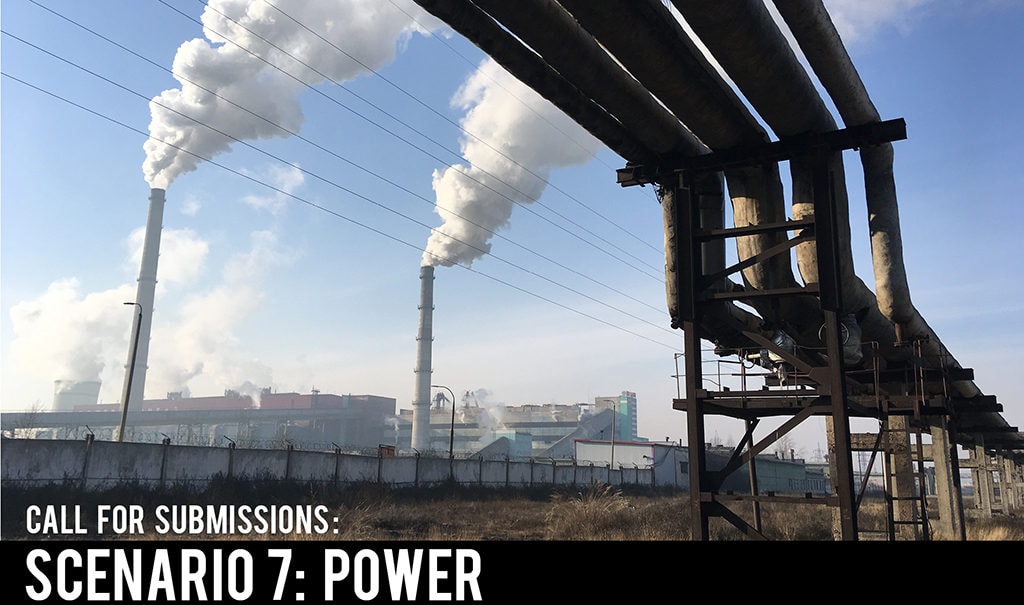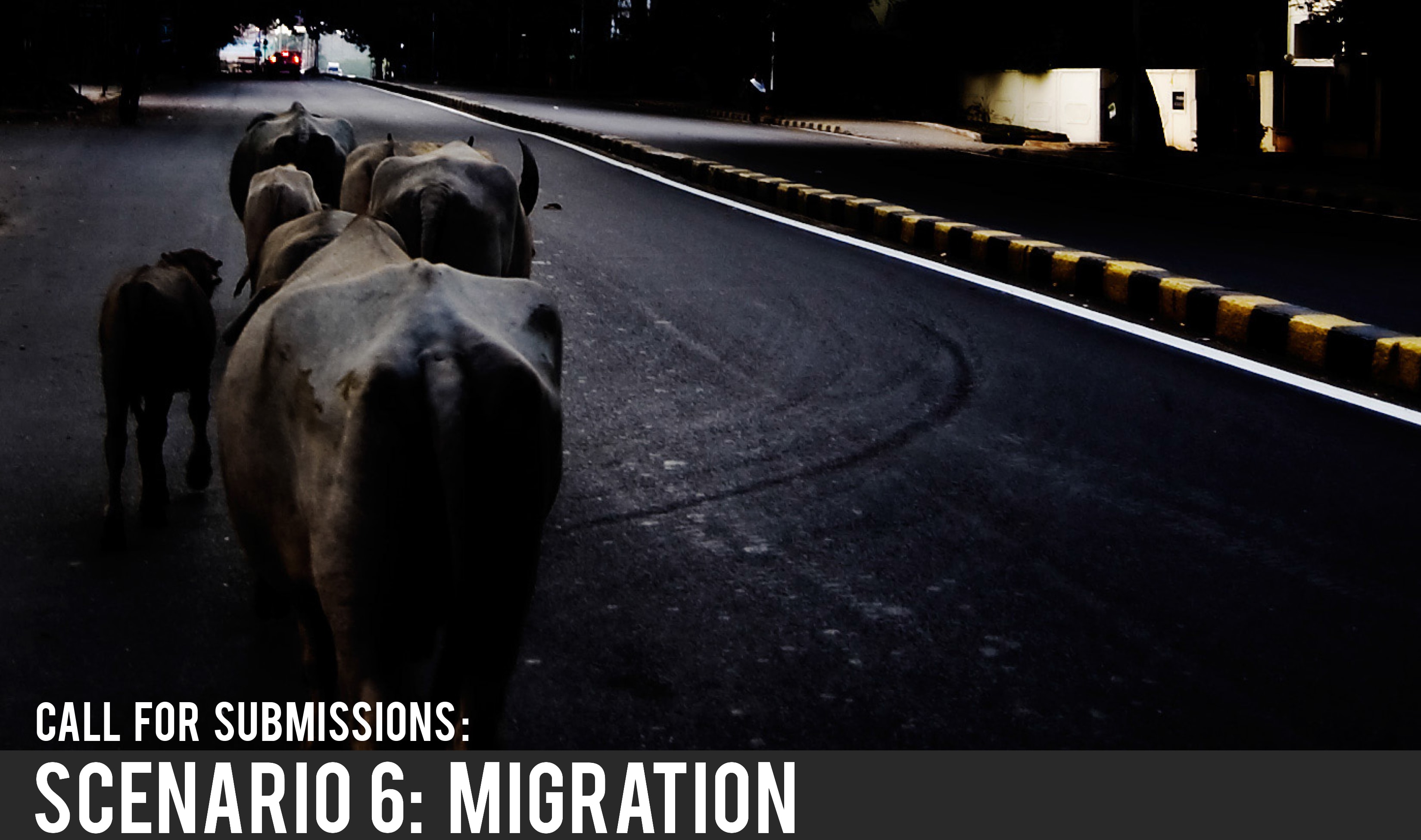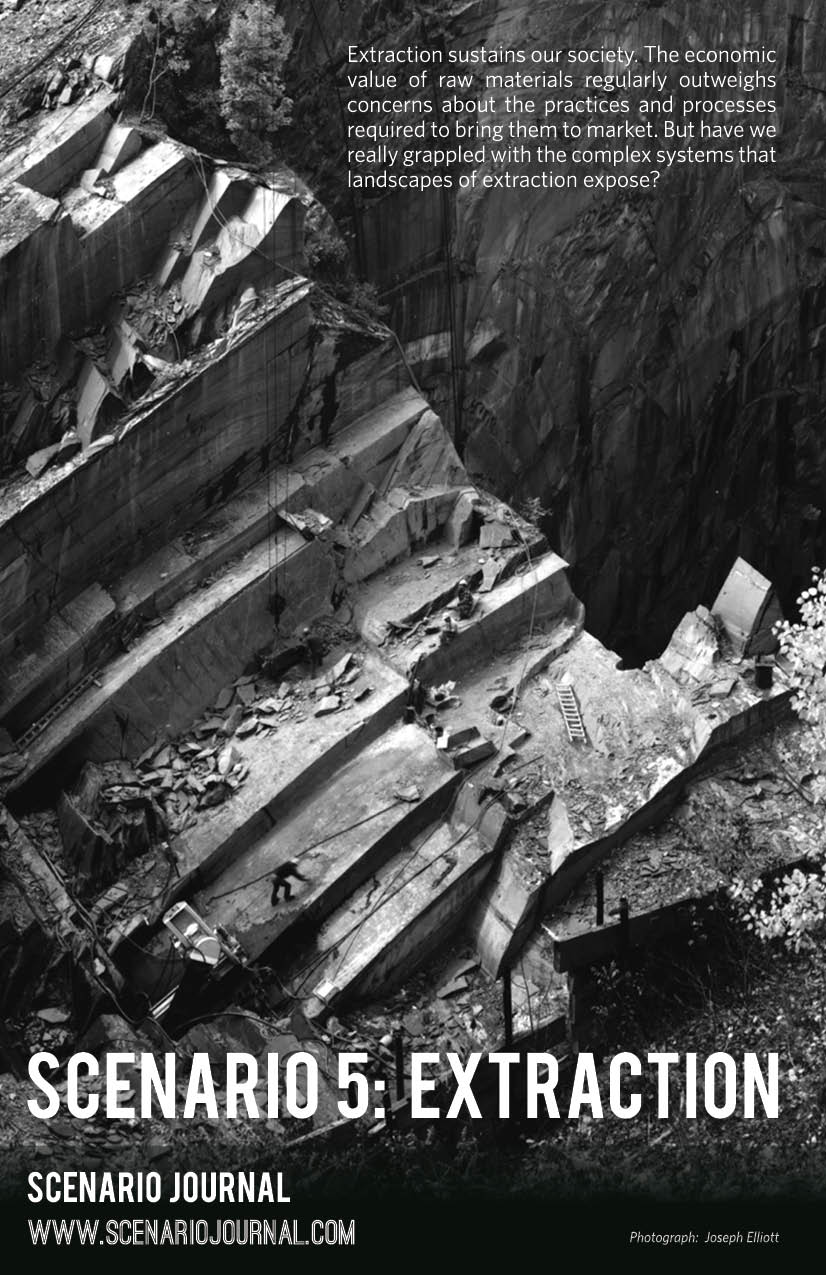We are happy to announce the open Call for Submissions for the next issue of Scenario Journal. This upcoming issue will explore the power dynamics of energy transitions, in the context of tackling climate change; it will look at the ways in which power and issues of equity course through our social, political and technological systems. We’re looking for pieces that take on the topic of power and energy, using authentic voices to present these layered topics from a variety of perspectives, looking back to history or imagining a radically new future. We’re interested in socially provocative, architecturally strange, infrastructurally driven projects. We’re looking for well-researched, vividly illustrated writing that helps us see landscapes and communities in a new light. Please submit your provocations.
If you haven’t had a chance to dig into our last issue: SCENARIO 6: Migration, we think you’ll enjoy it. Content, as always, is open-access and free of charge.
Submissions Due: May 24, 2019
Addressing climate change will require a wholesale reimagining of society and economy. It is a design challenge of unparalleled scale and scope, demanding that we rethink how we produce energy, build cities, grow food, manage land, and transform labor. This, of course, is not just a conversation about energy infrastructure or carbon pricing.
Infrastructure is always political, and energy transitions have always been contested, pitting established players against upstart technologies and new coalitions. The effects on communities are similarly uneven, resulting in unequal access to economic opportunity, to decision-making, and to environmental harm. How can a radical reimagining of energy infrastructure create opportunities for an inclusive and participatory conversation about climate change and social justice? Who has the power to talk about infrastructure, and who gets left out? Can designers play a meaningful role in amplifying diverse voices and generating nuanced proposals for a more socially and environmentally just future?
Of course, the design community has its own issues with power, inclusivity, and equity. Can designers hope to participate in this conversation if we don’t address our own problematic relationship to power?
SCENARIO 7 welcomes the submission of critical essays, provocations, and design projects that explore the relationship between climate action, energy infrastructure, and social justice.
Submission Requirements:
- Design projects and photo essays should have a clear and focused text no longer than 1000 words, accompanied by 10-15 images.
- Article-based submissions should be no longer than 2500 words.
- We prefer to receive submissions as Microsoft Word documents with images embedded with the text. All sources and citations should be clearly indicated and included as footnotes or endnotes according to the Chicago Manual of Style.
- Send submissions to mail@scenariojournal.com, with ‘Submission′ in the subject line. Submissions will be reviewed on a rolling basis.
- Please alert us if work has been previously published or if it has been submitted simultaneously to another publication.
This issue of Scenario Journal is being made possible by the support of the Kleinman Center for Energy Policy at the University of Pennsylvania.




